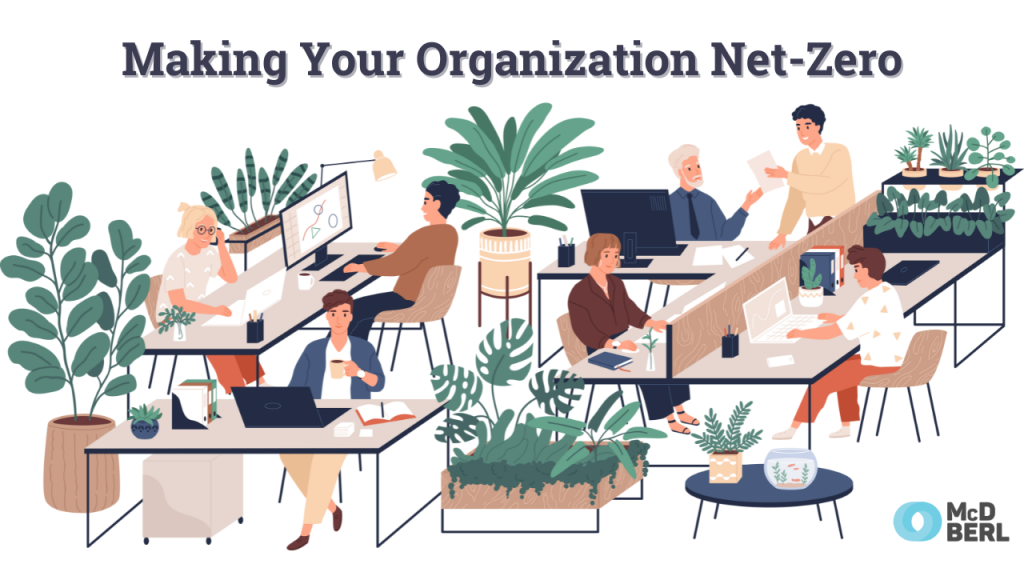Is Your Organization Ready for Net Zero?

In today’s rapidly evolving world, the concept of net zero has gained significant traction and importance. With climate change becoming a pressing global concern, organizations across various industries are increasingly focusing on reducing their carbon footprint and embracing sustainable practices. Achieving net zero status has become a paramount goal for companies worldwide, but the question remains: Is your organization truly ready for net zero?
What is Net Zero?
Before delving into the readiness of your organization, let’s first establish a clear understanding of what net zero means. Net zero refers to the state where an entity’s carbon emissions are balanced by the amount of carbon removed from the atmosphere. In simpler terms, it implies achieving a balance between the greenhouse gases produced and those removed or offset. This ambitious target necessitates a comprehensive approach that encompasses not only operational emissions but also supply chain activities and other indirect sources.
Assessing Readiness:
Assessing your organization’s readiness for net zero requires a thorough examination of various aspects, ranging from internal operations to external collaborations. Let’s explore some crucial considerations to determine if your organization is on the right track:
- Carbon Footprint Analysis: Conduct a detailed analysis of your organization’s carbon footprint. Evaluate the emissions generated across your operations, including energy consumption, transportation, waste management, and more. Identifying emission hotspots will help prioritize areas for improvement.
- Goal Setting: Establish clear and measurable net zero goals. These goals should be aligned with the Science-Based Targets Initiative (SBTi) or other recognized frameworks. Setting ambitious yet achievable targets demonstrates your organization’s commitment to sustainability.
- Emission Reduction Strategies: Implement effective emission reduction strategies tailored to your organization’s unique circumstances. This may involve transitioning to renewable energy sources, optimizing energy efficiency, adopting circular economy principles, and promoting sustainable procurement practices.
- Stakeholder Engagement: Engage with internal and external stakeholders to foster a shared commitment towards net zero. Encourage employee involvement, seek feedback, and collaborate with suppliers, customers, and partners to drive collective action.
- Technology and Innovation: Embrace technological advancements and innovation to support your net zero journey. Explore renewable energy solutions, invest in energy-efficient infrastructure, and leverage data analytics to identify further opportunities for emission reduction.
- Supply Chain Integration: Extend your sustainability efforts beyond organizational boundaries by working closely with your supply chain partners. Encourage transparency, promote sustainable practices, and collaborate to minimize the collective carbon footprint.
- Reporting and Disclosure: Transparently report your progress towards net zero targets. Regularly disclose your emissions data and showcase your sustainability initiatives to build trust and credibility among stakeholders.
- Regulatory Compliance: Stay informed about relevant regulations and policies related to carbon emissions and sustainability. Ensure compliance with existing and upcoming mandates, and proactively adapt your strategies to align with evolving guidelines.
The Benefits of Net Zero :
Transitioning to a net zero organization brings numerous benefits beyond addressing climate change. It can enhance your reputation, attract environmentally conscious customers, foster innovation, and create new business opportunities. By integrating sustainability into your core operations, you can achieve cost savings through improved resource efficiency and reduced energy consumption. Moreover, net zero efforts often lead to increased employee satisfaction and retention, as individuals are more likely to be engaged with organizations that prioritize environmental stewardship.
Taking the Next Steps:
If your organization is committed to embarking on a net zero journey, it’s crucial to develop a comprehensive roadmap for implementation. Seek guidance from sustainability experts like McD BERL, engage with industry networks, and leverage available resources to navigate this transformative path successfully. Remember that net zero is an ongoing process, and continuous improvement is essential.
By adopting a proactive approach, aligning your organization’s goals with global sustainability initiatives, and prioritizing the integration of net zero practices into your operations, you can position your organization as a leader in sustainable design. Reach out to us to make your organization net-zero!




